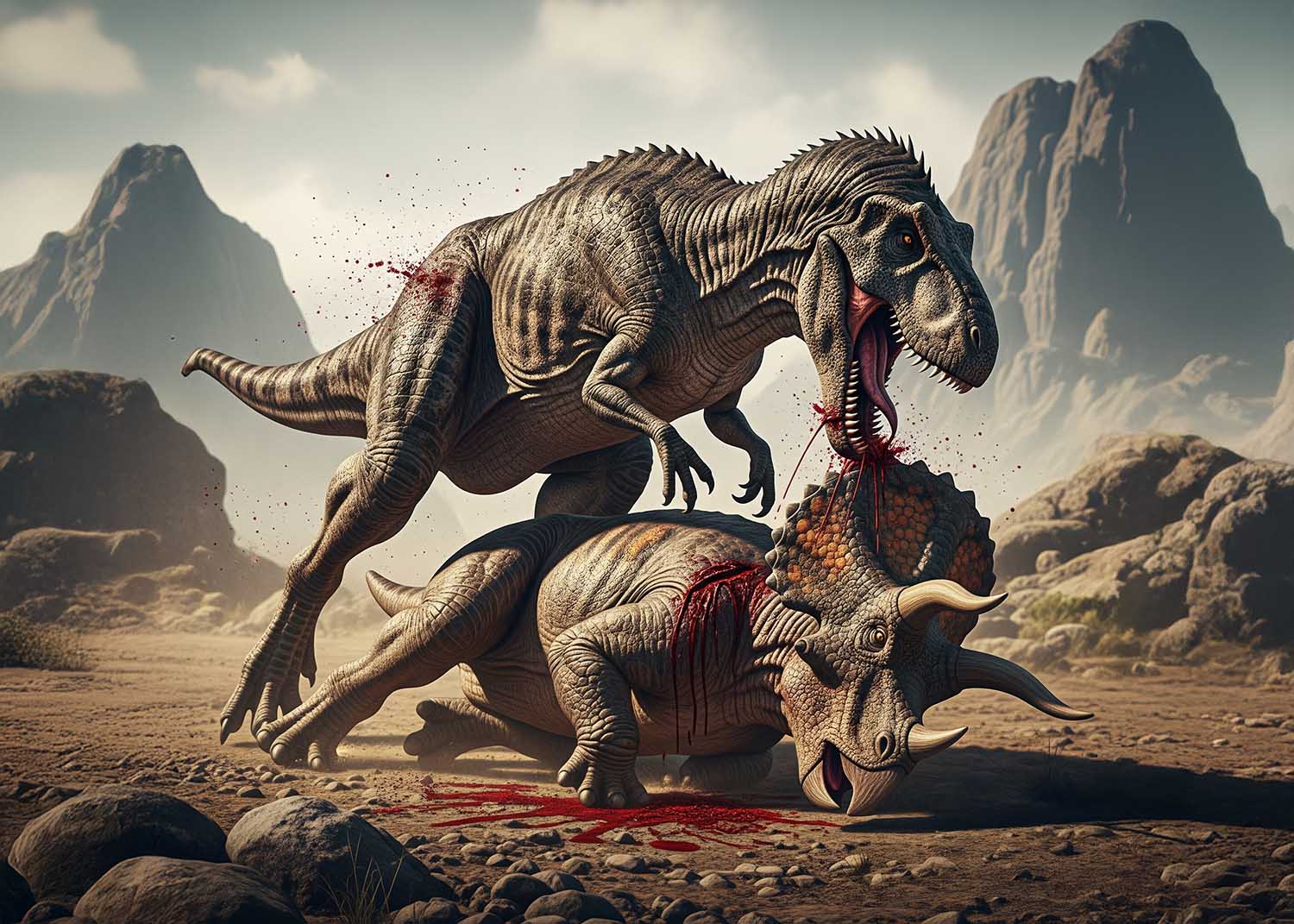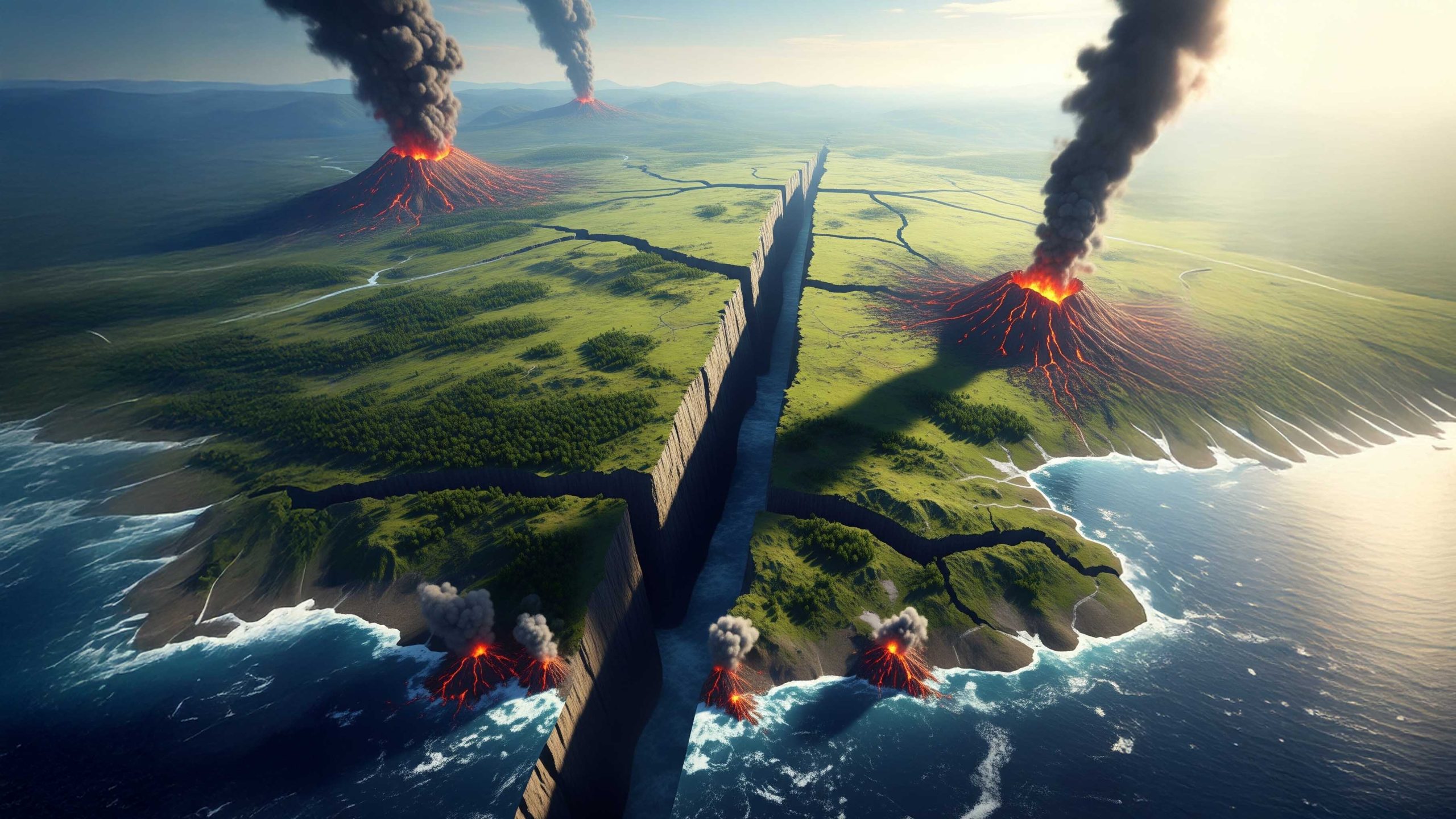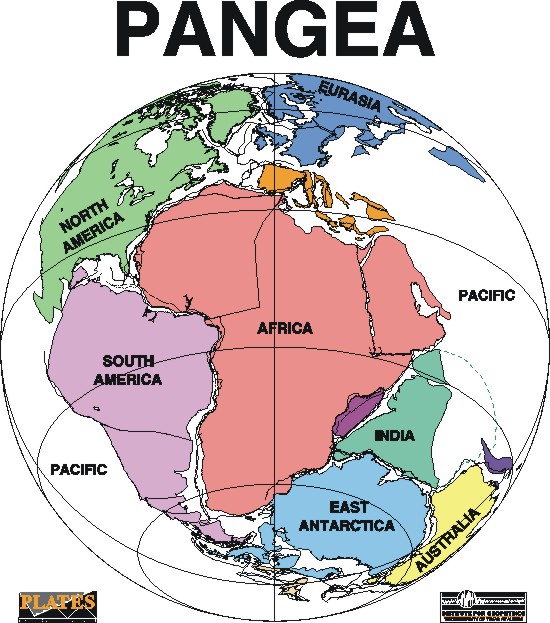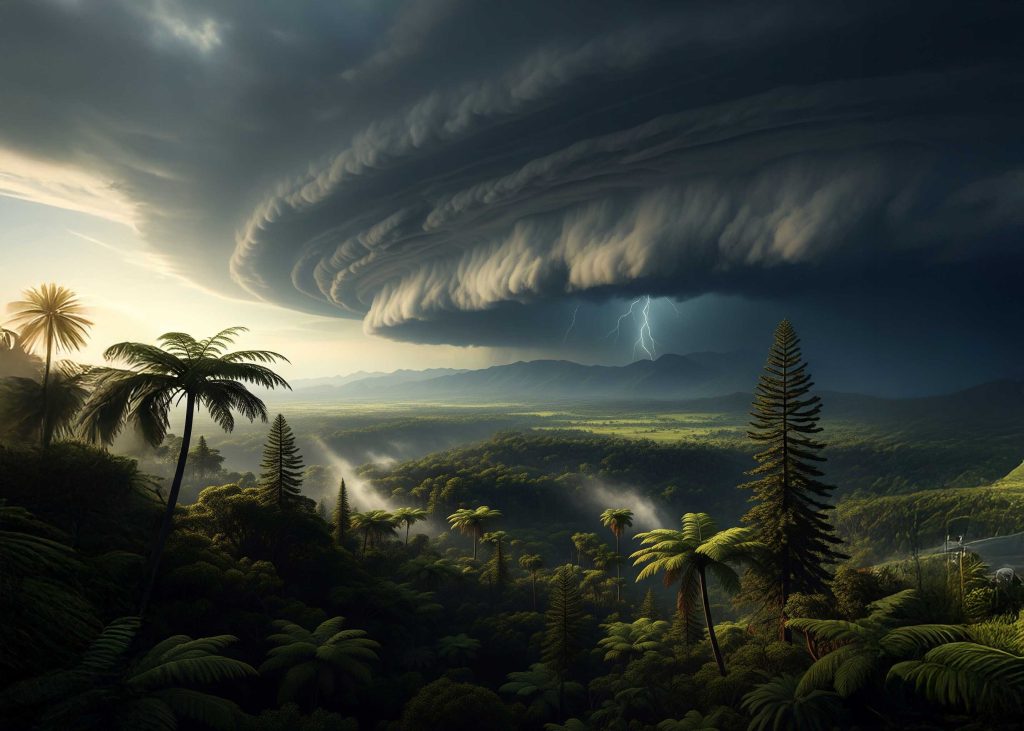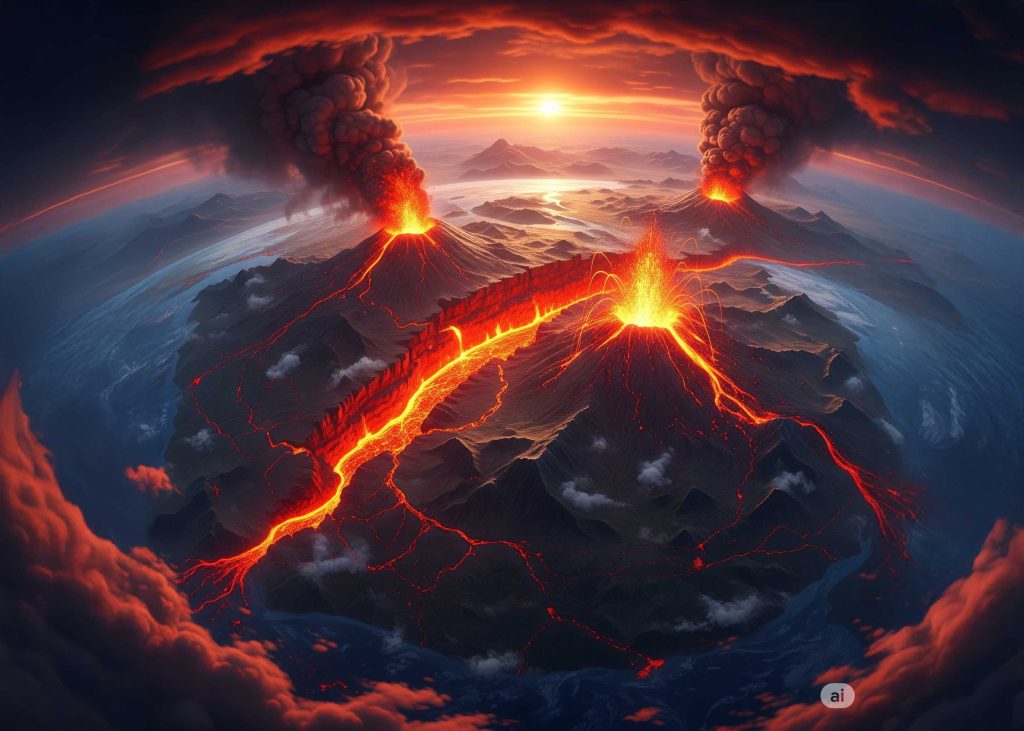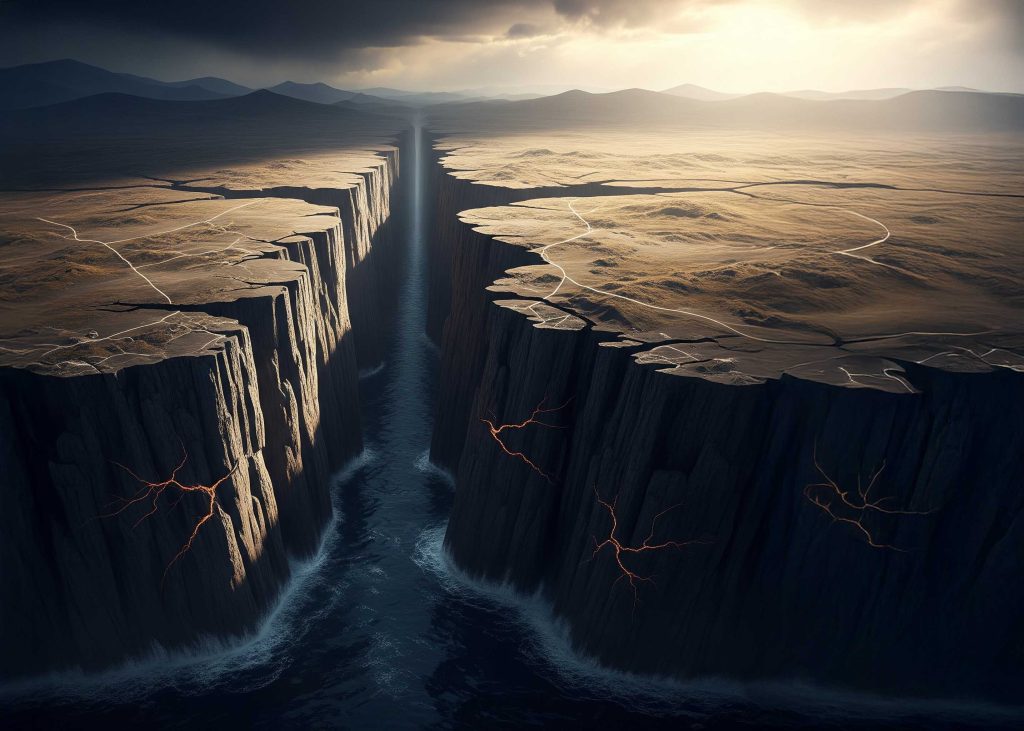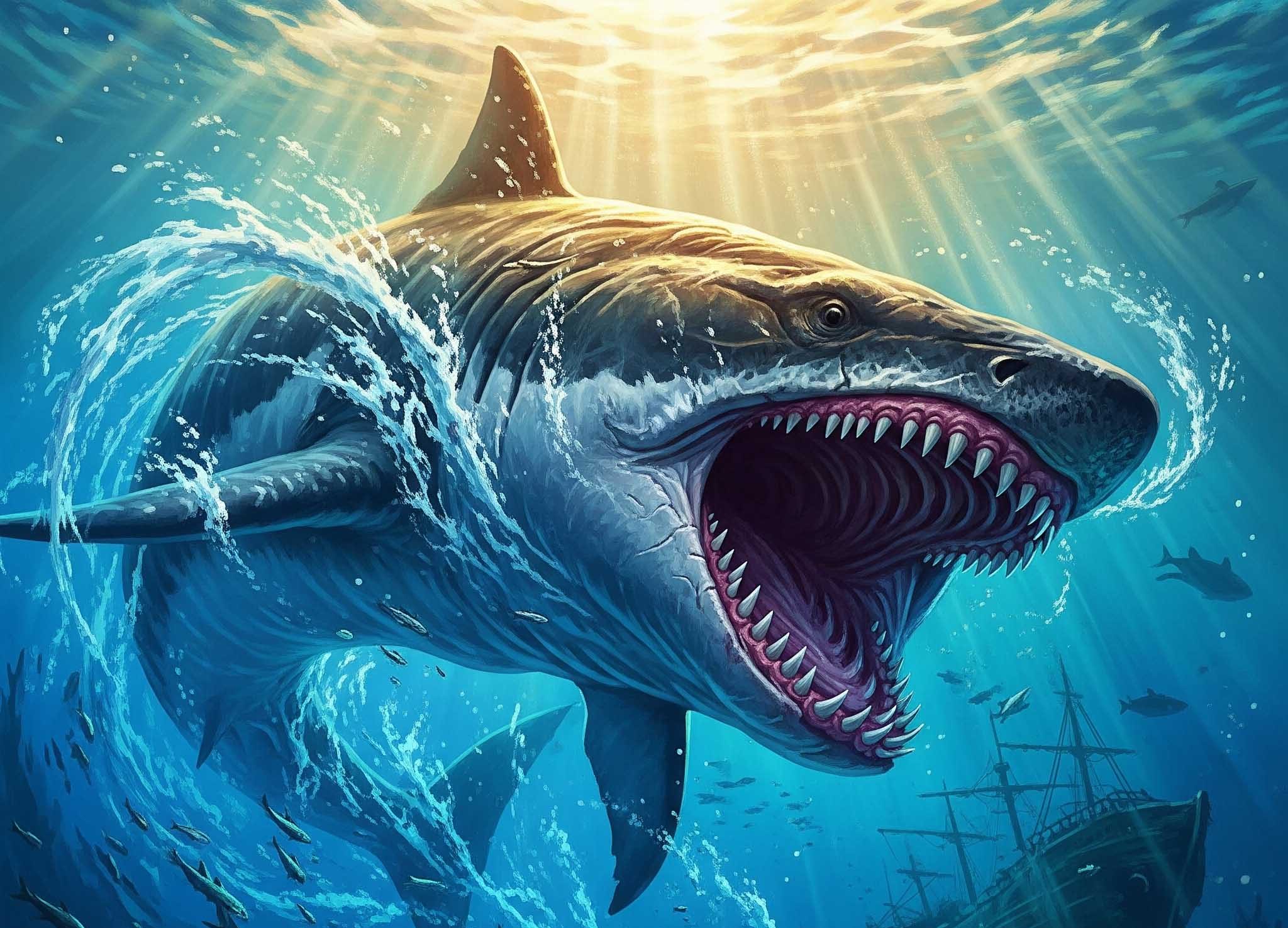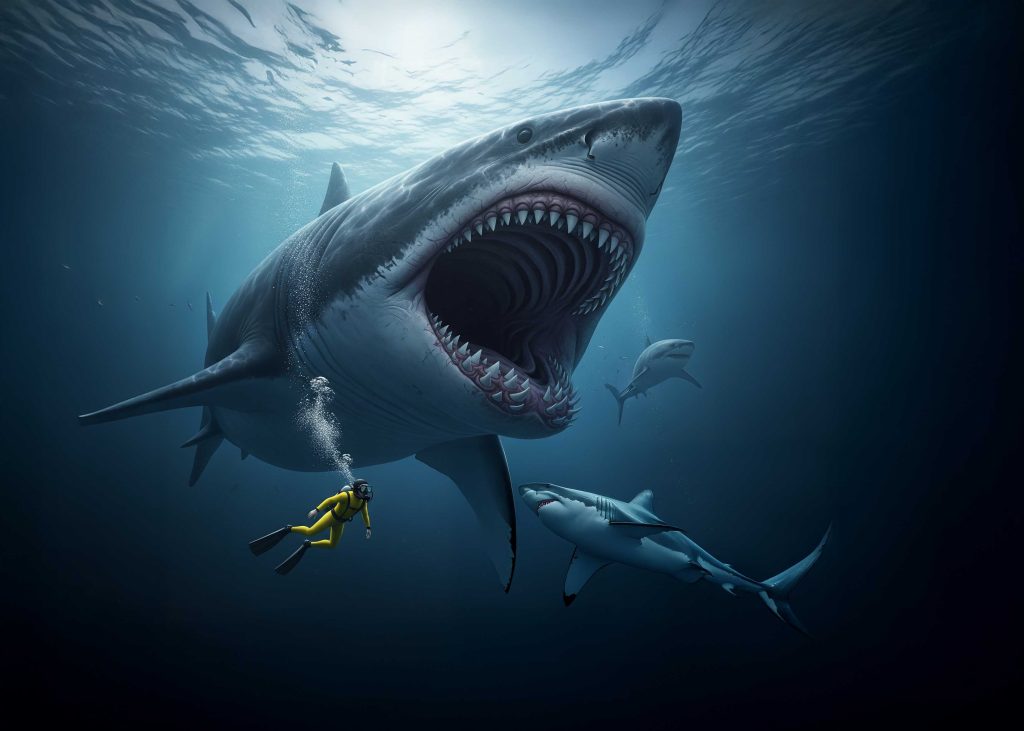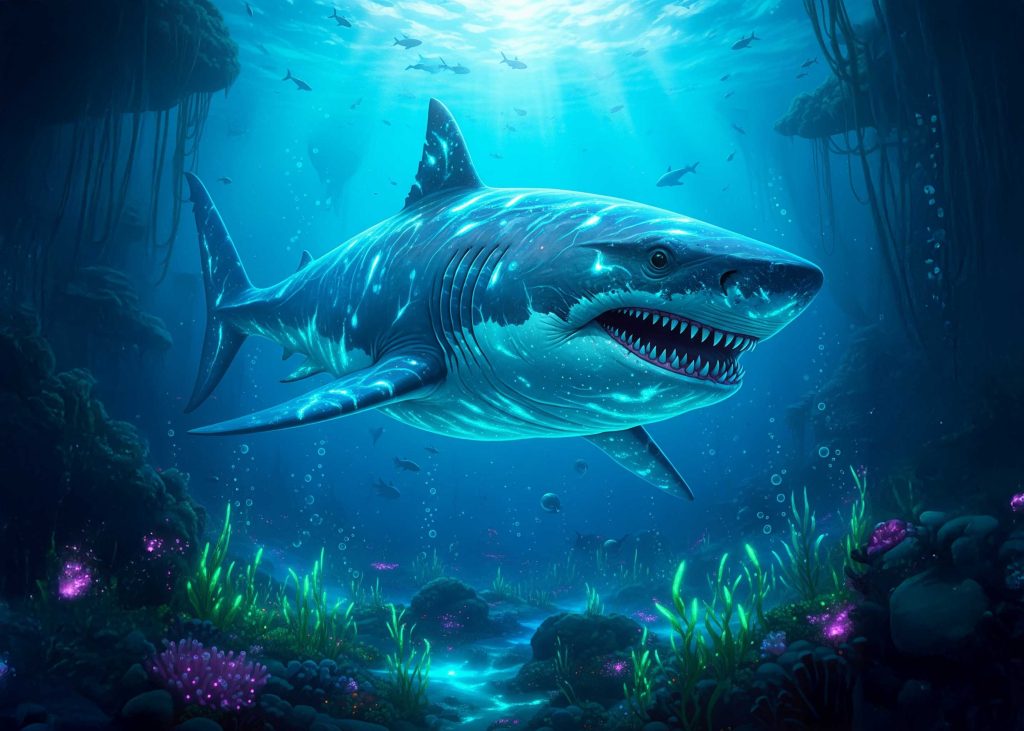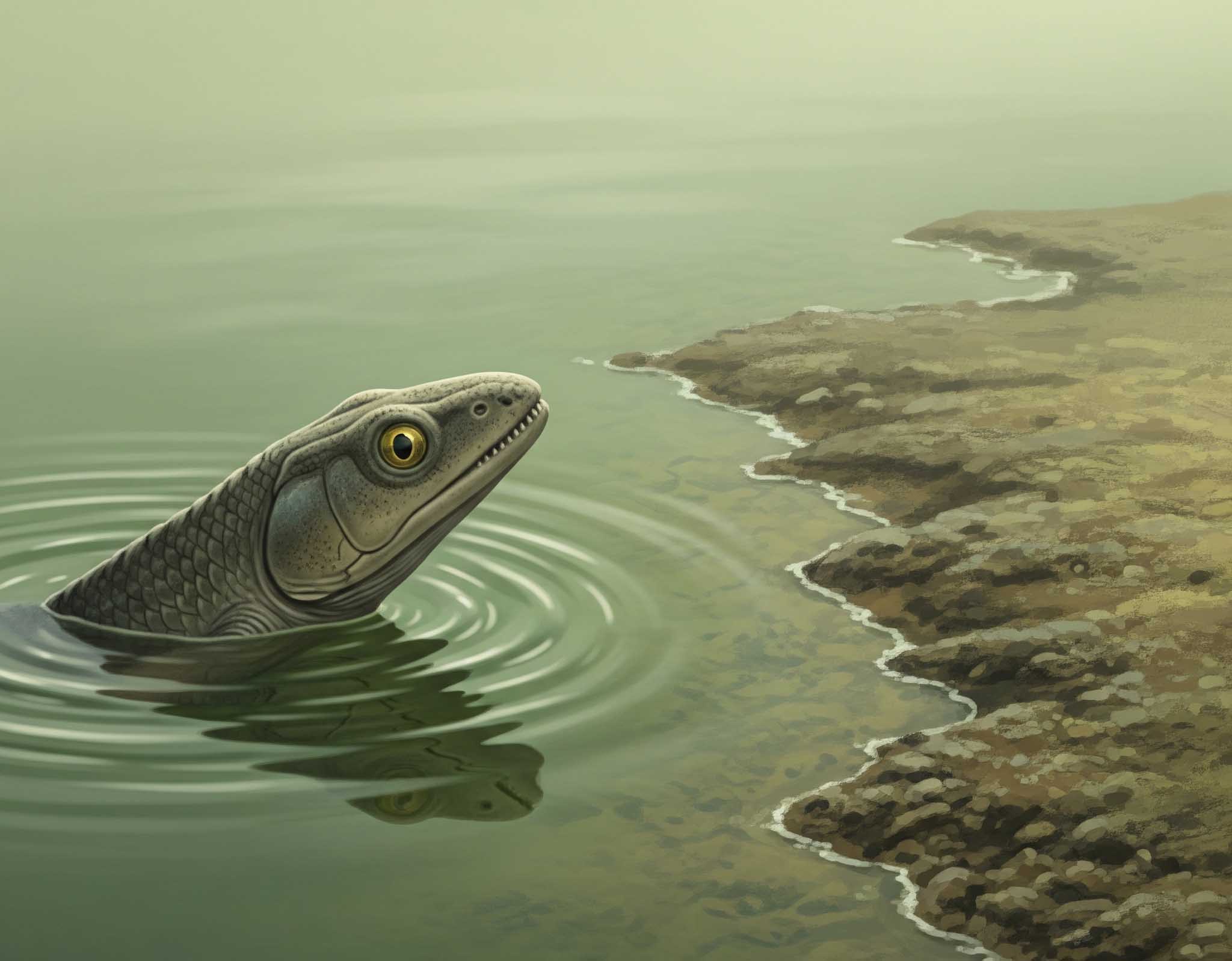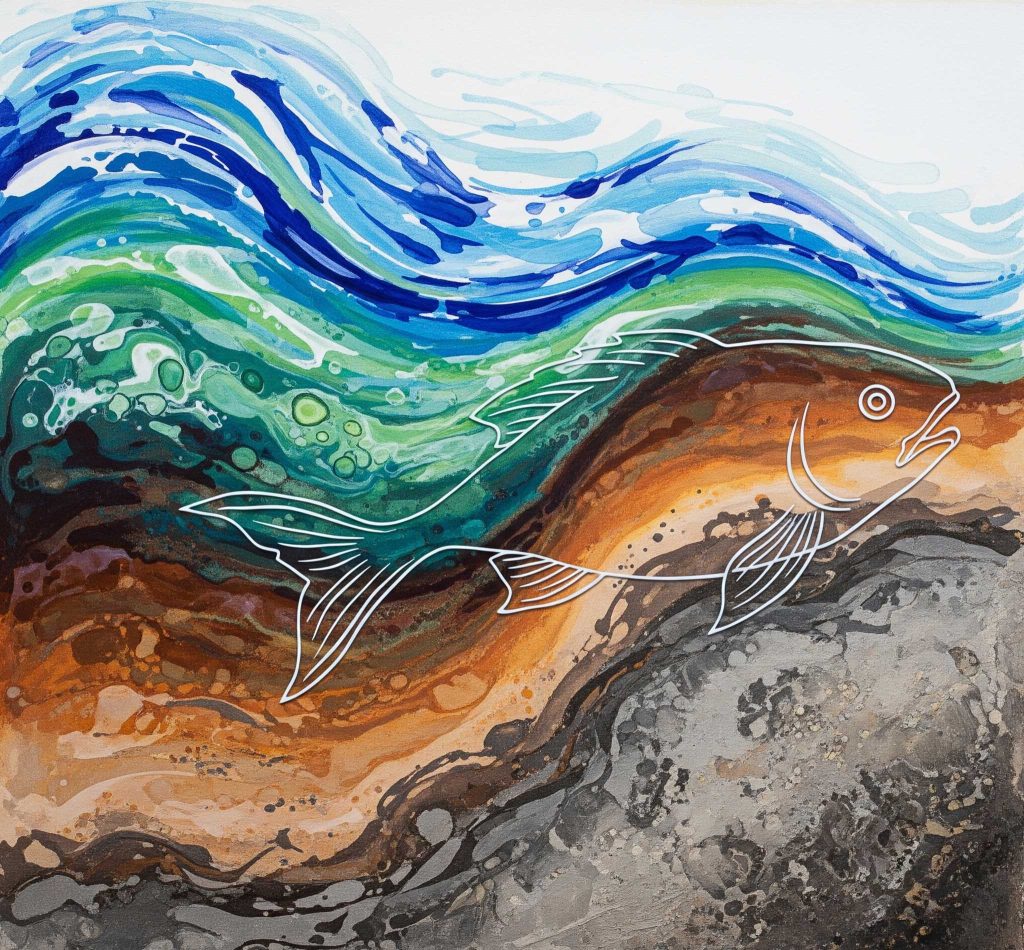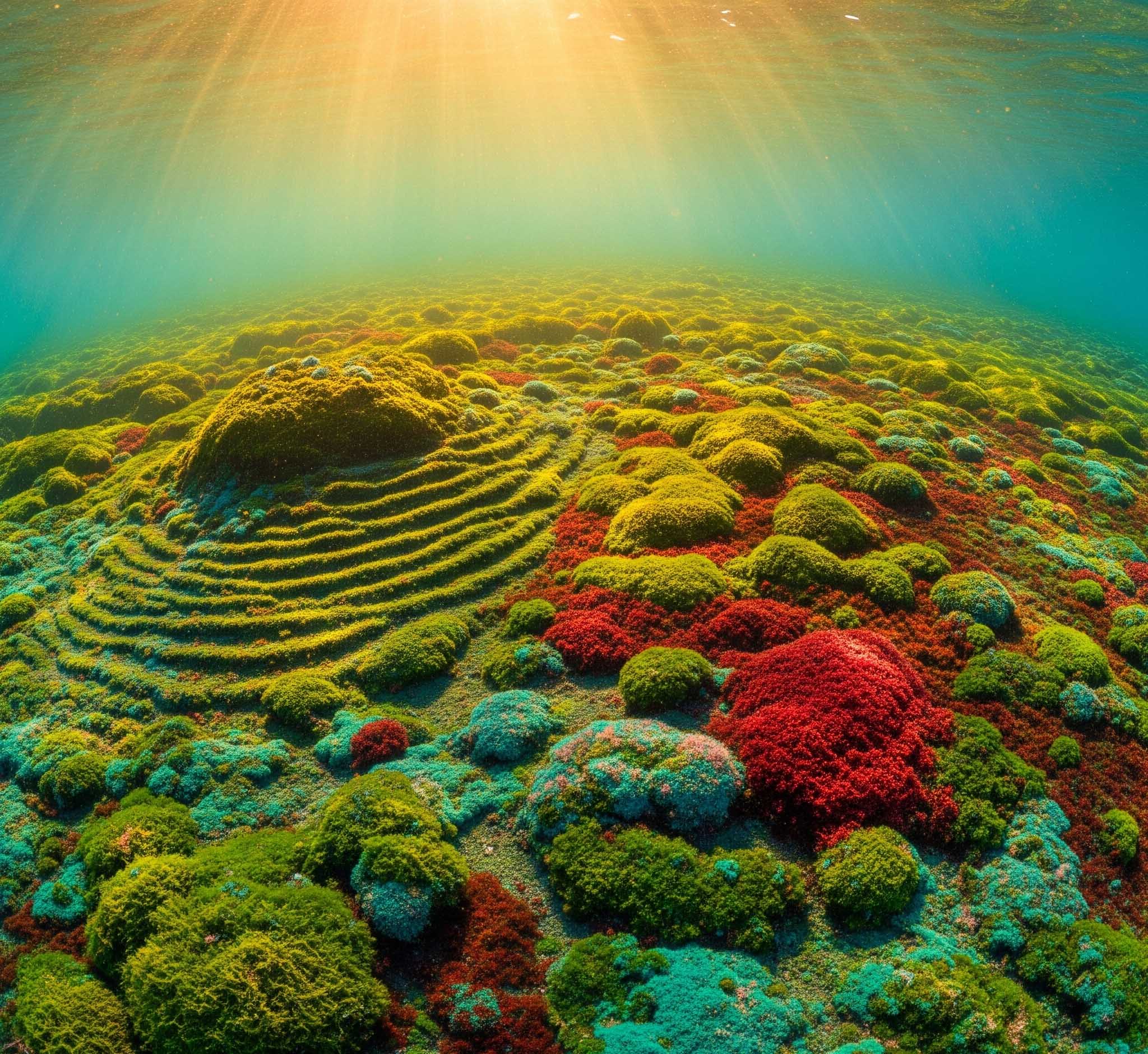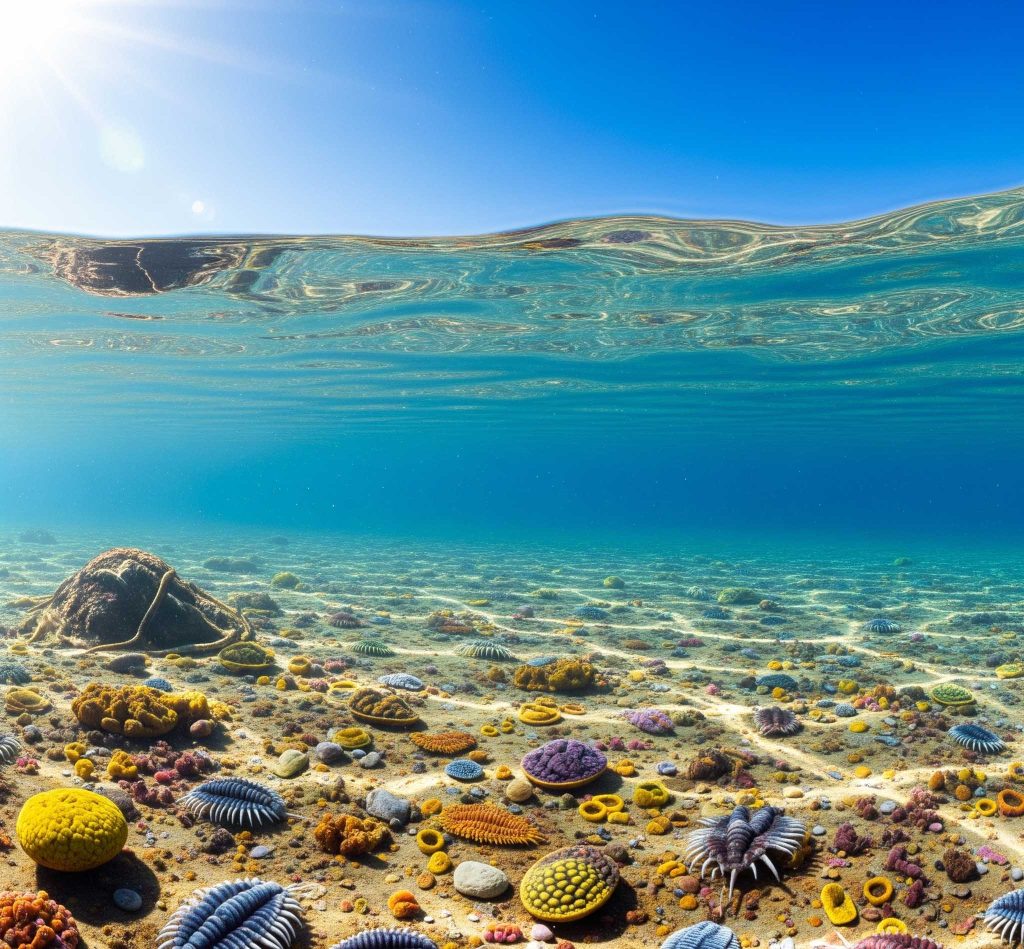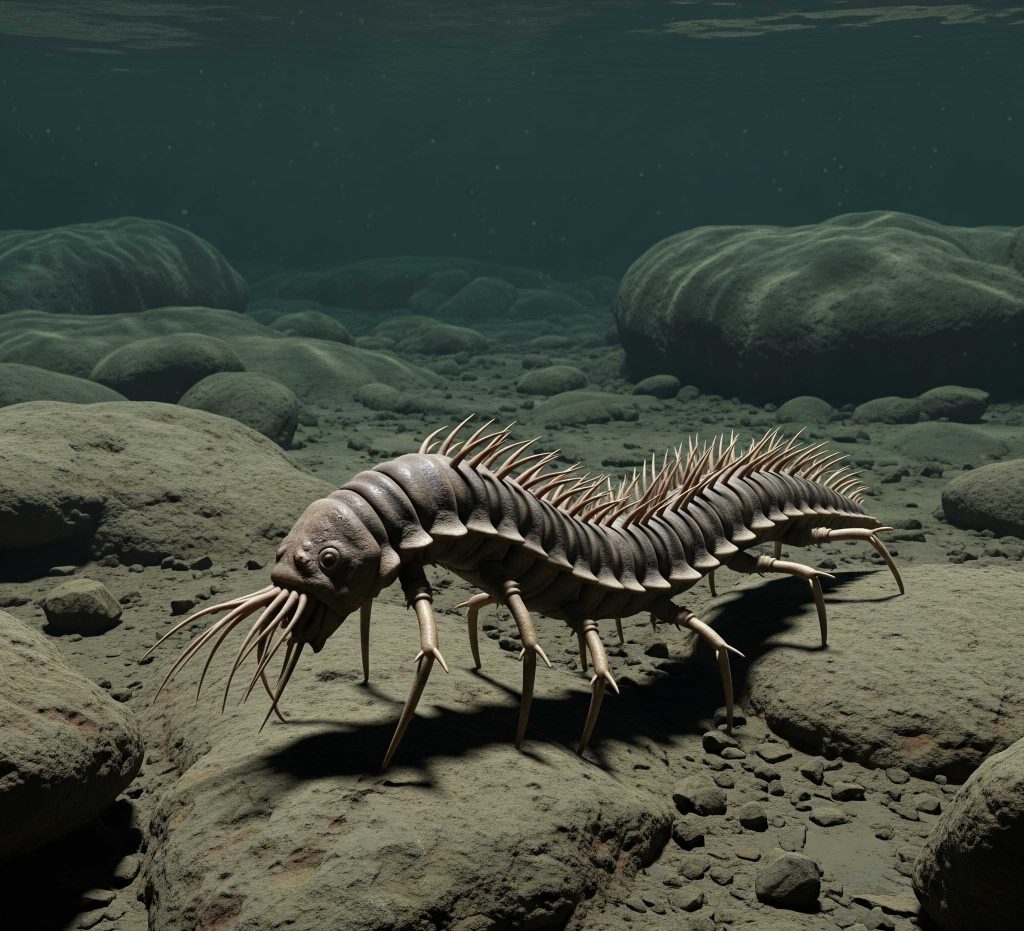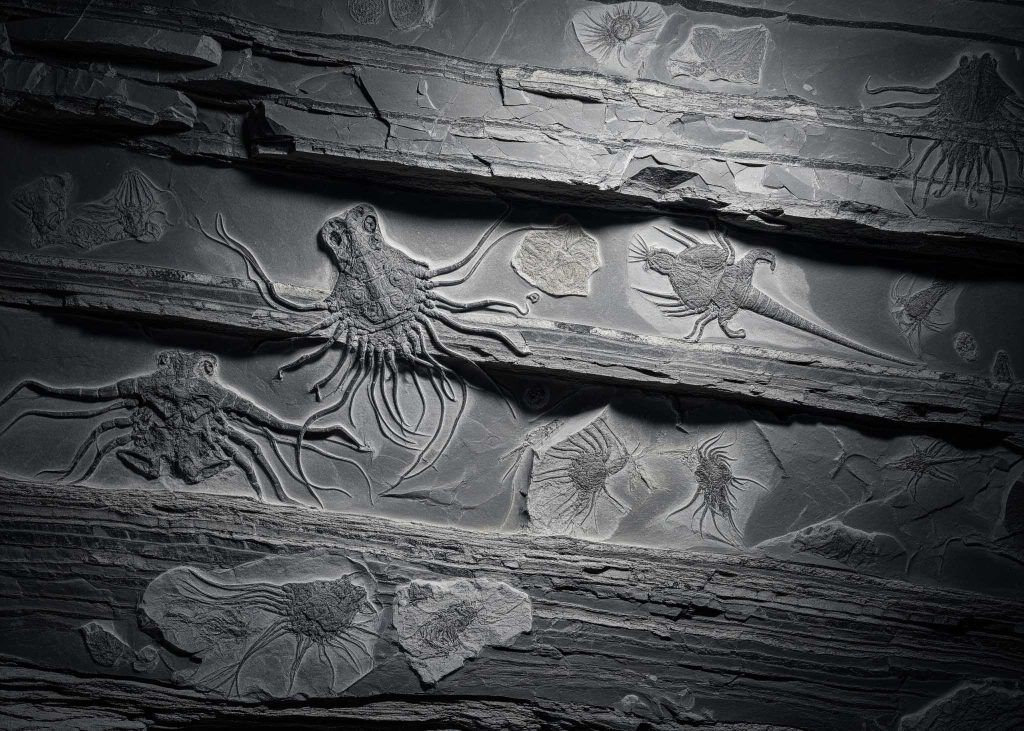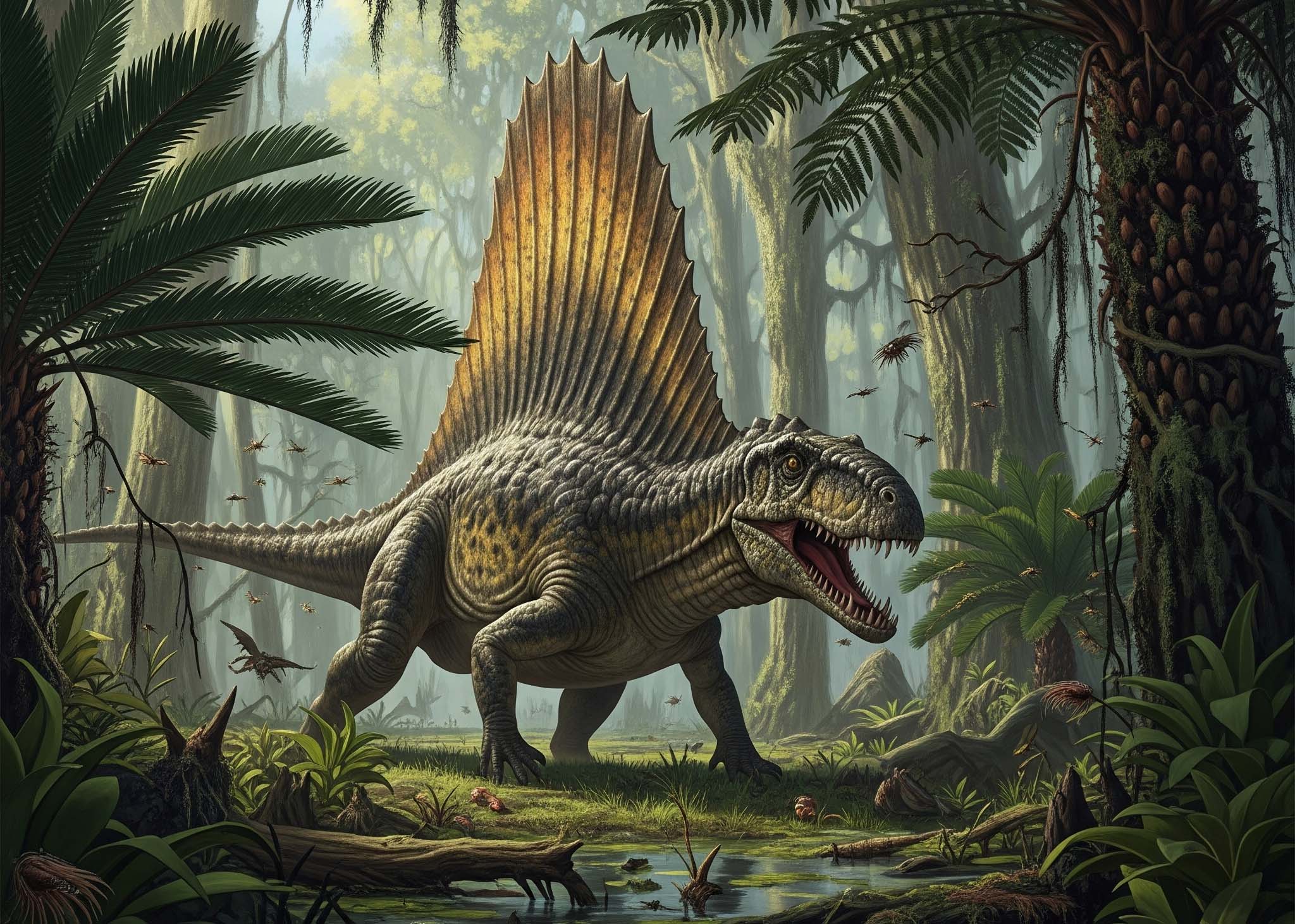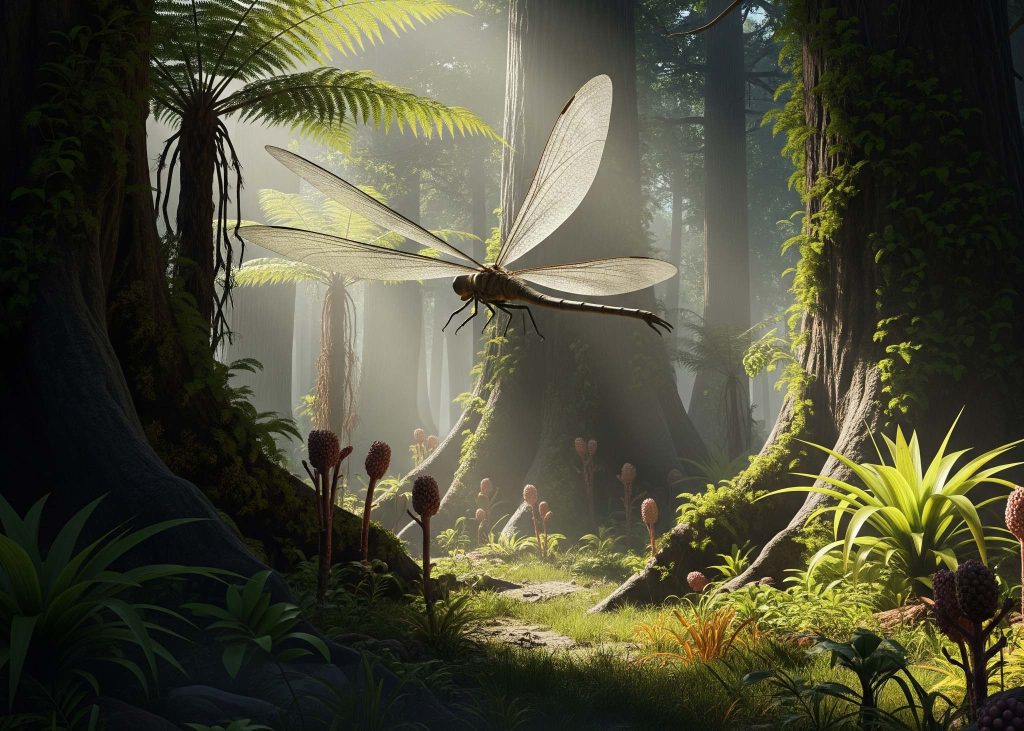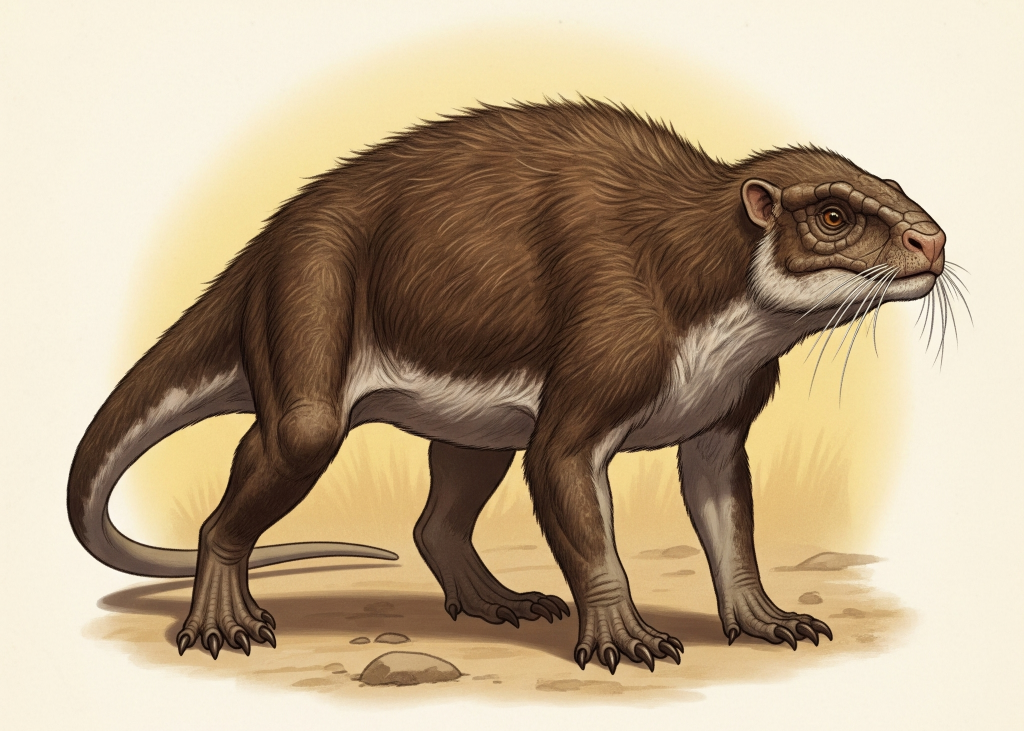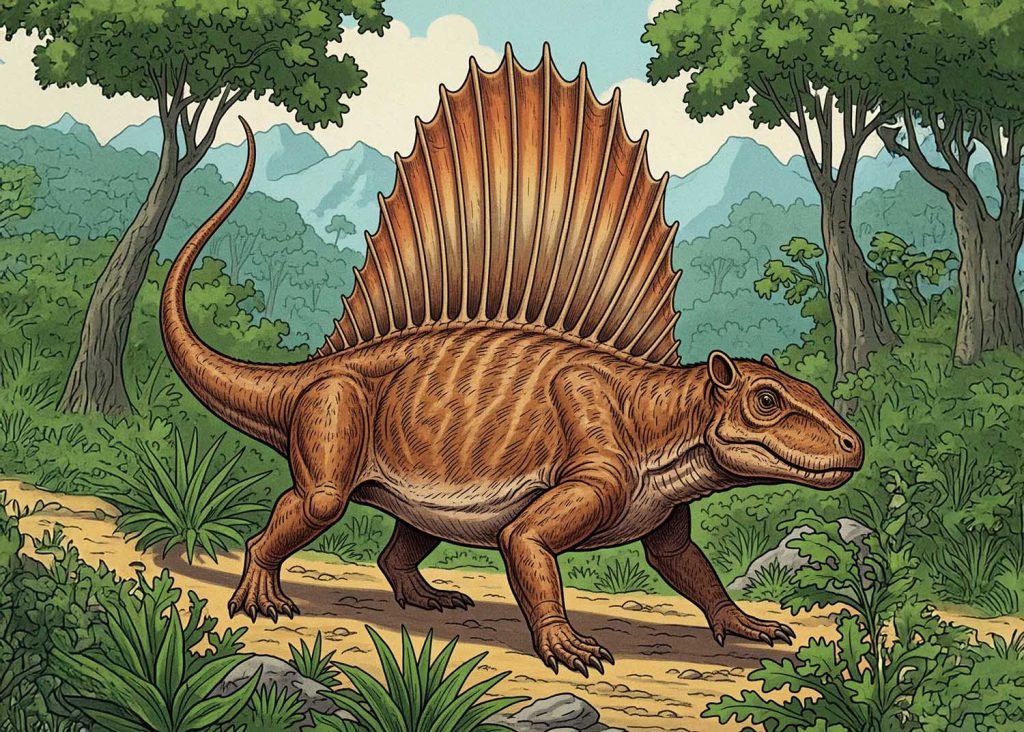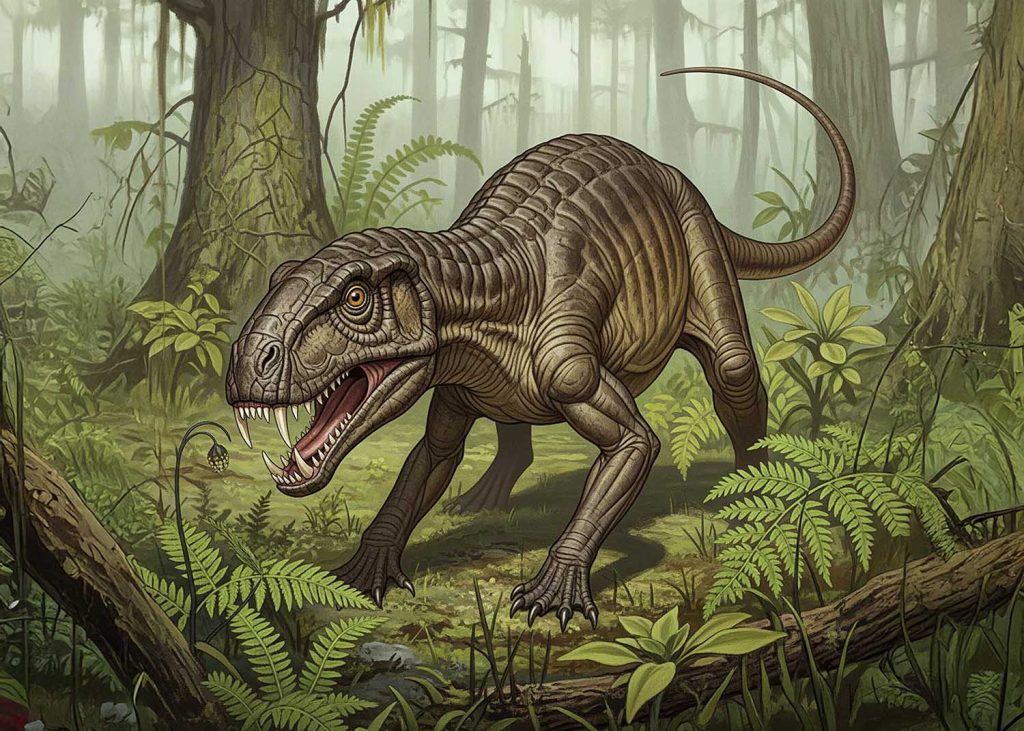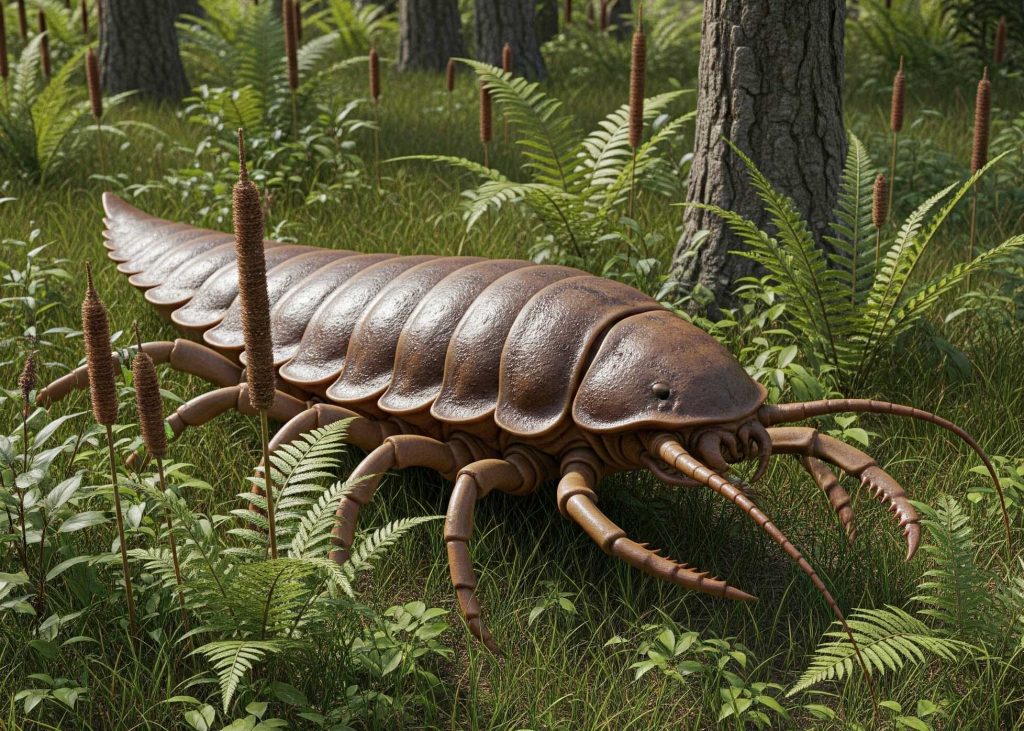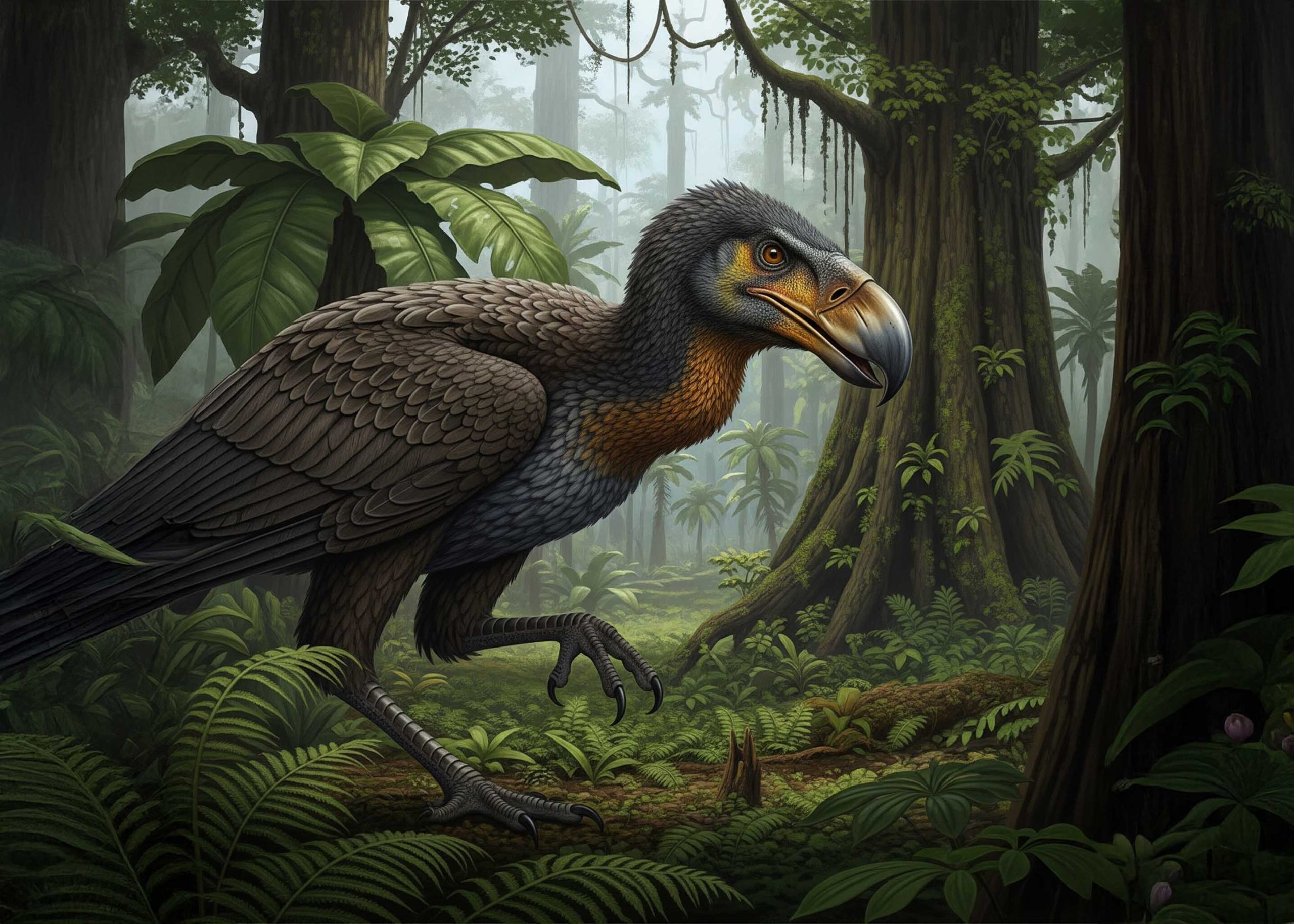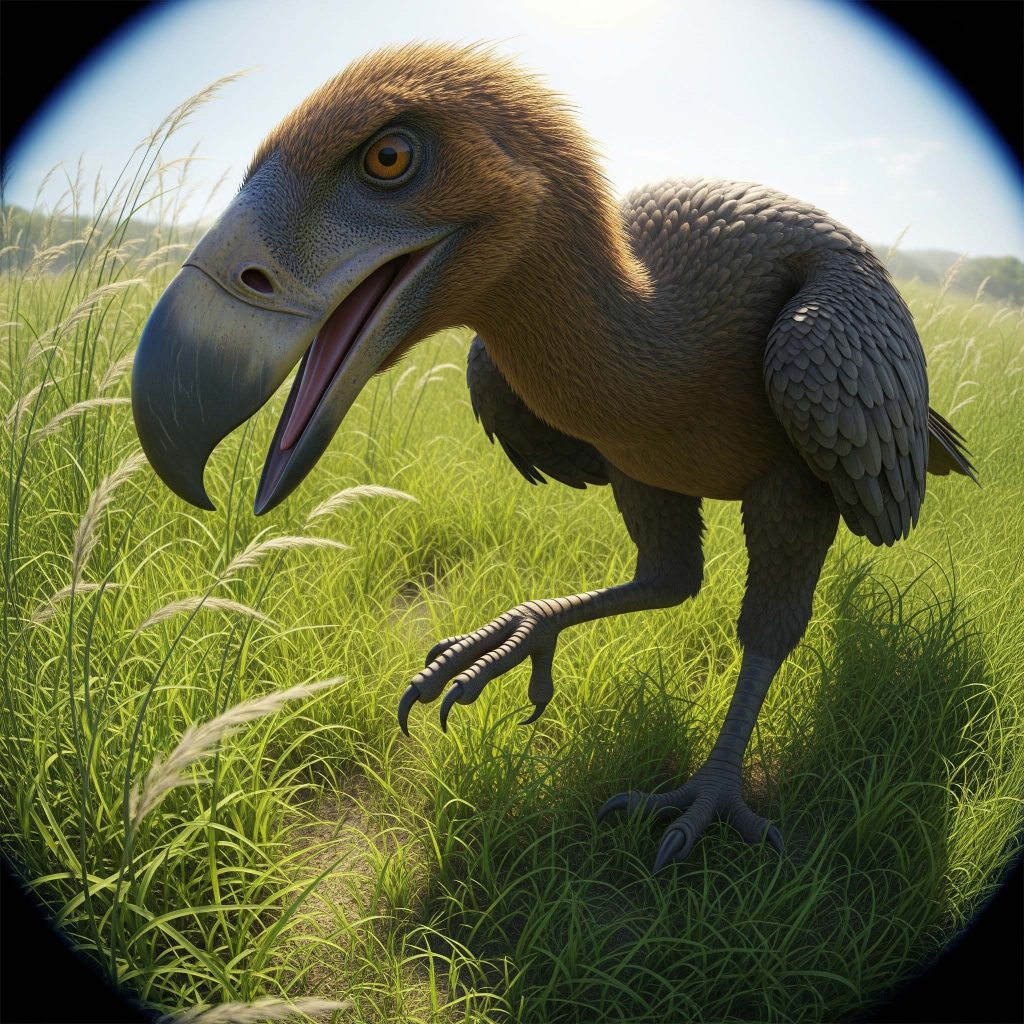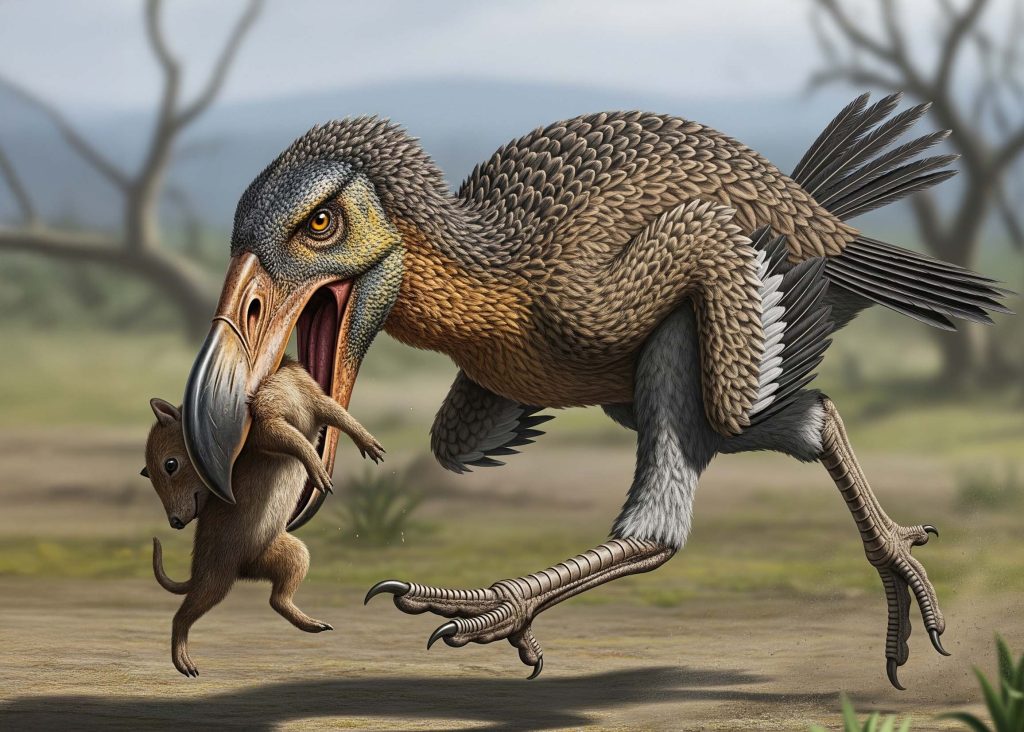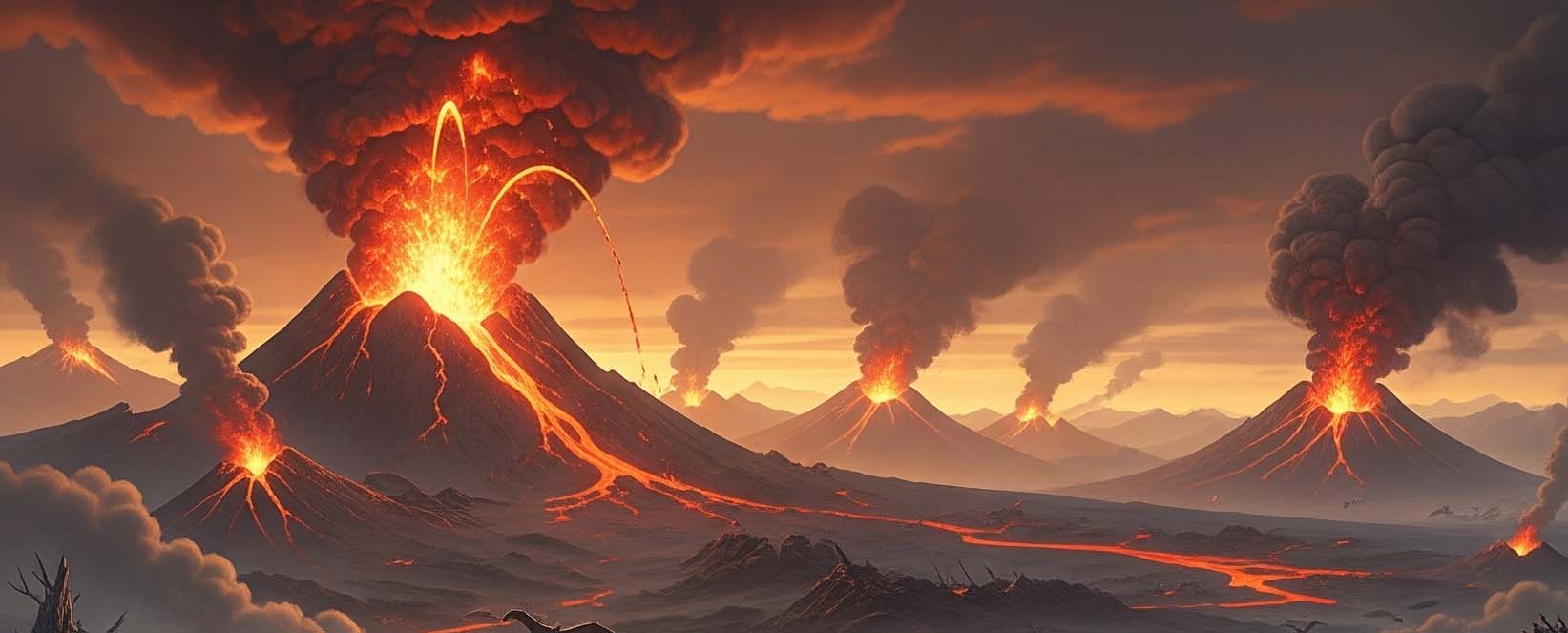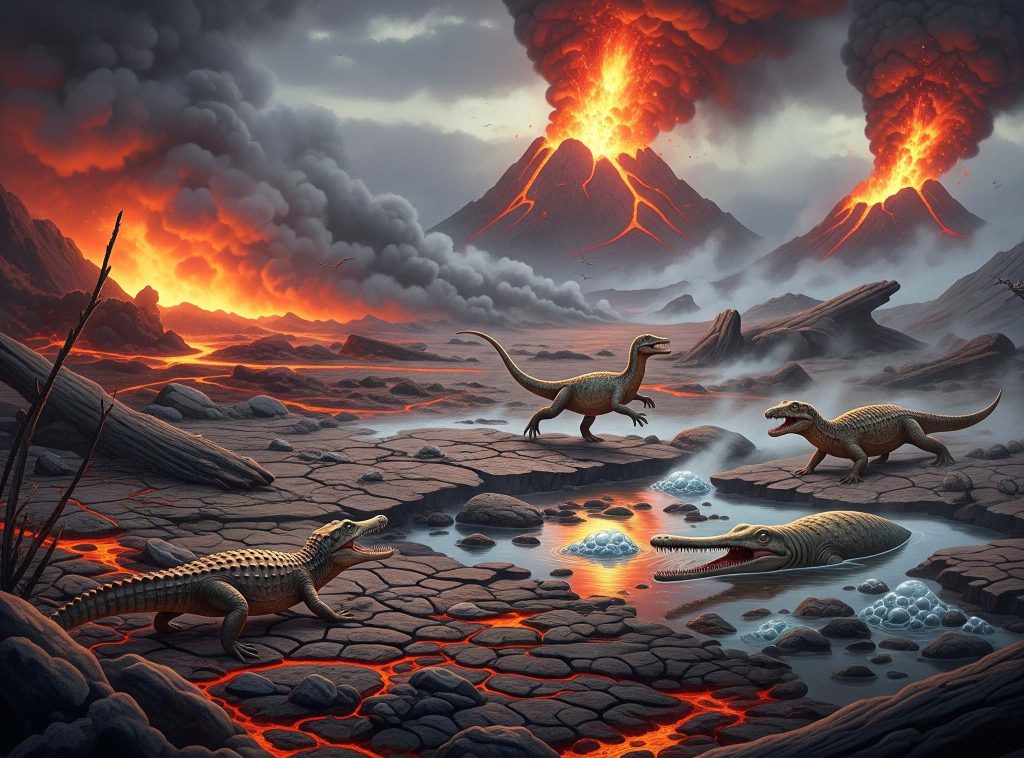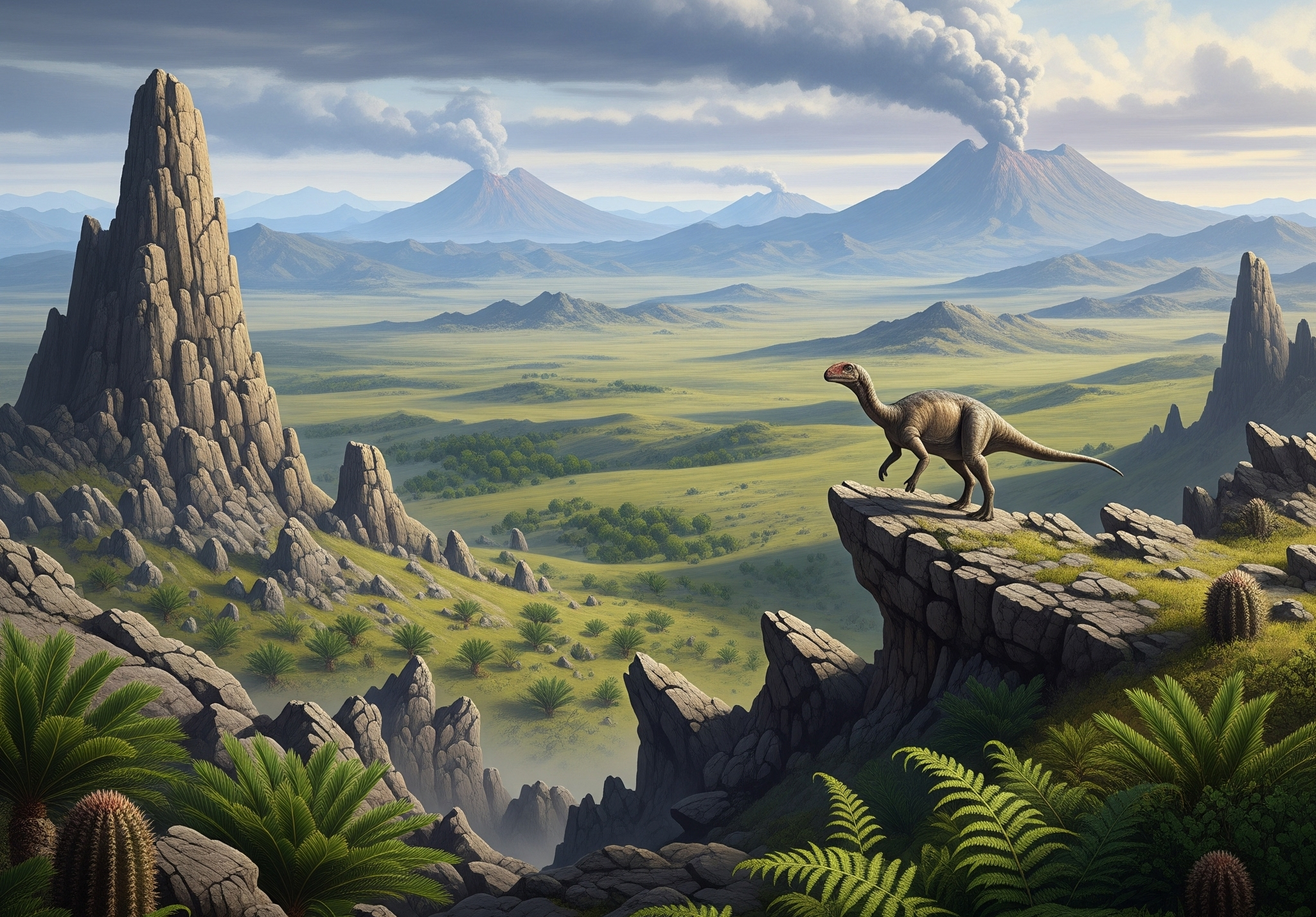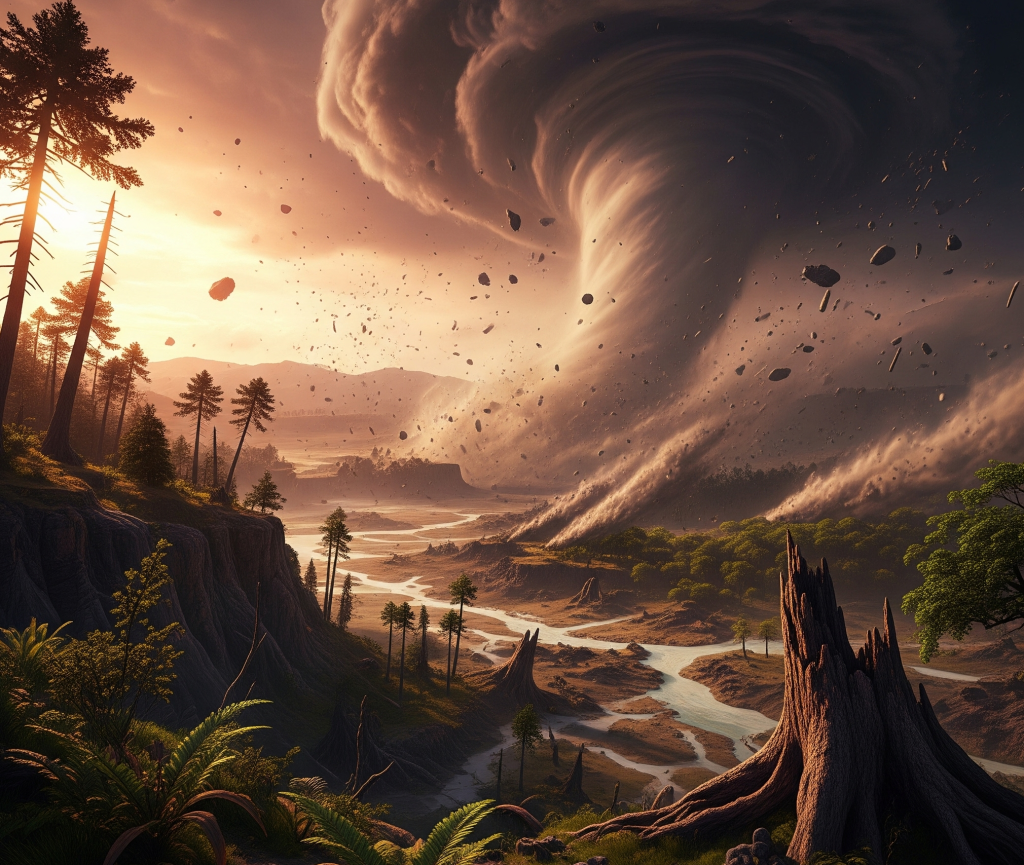Listen to this article
Forget the movies for a moment and let’s explore the real Jurassic world. This time, from about 201 to 145 million years ago, was a strange and amazing chapter in Earth’s history. It was a planet of giants, where the rules were very different from today.
The world itself was changing in a big way. The giant supercontinent, Pangaea, was starting to break apart. This created new oceans and changed the weather all over the planet.
Don’t Miss This!
After reading, challenge yourself with our interactive quiz at the end. Click here to take the Quiz
Index
- A Hot, Steamy World
- The Kingdom of the Giants
- The Fearsome Jurassic Hunters
- A World Without Flowers
- Scary Life in the Jurassic Seas
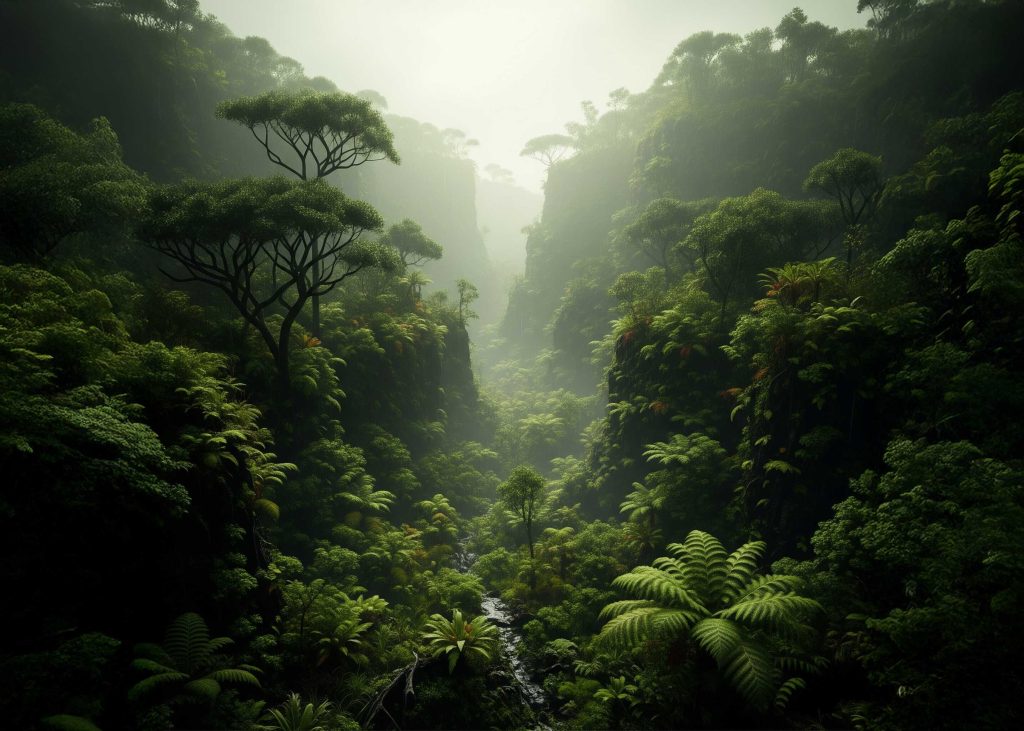
A Hot, Steamy World
The breakup of Pangaea had a huge effect on the climate. The dry deserts of the earlier Triassic period were replaced by warm, wet, and humid weather. This created lush, green landscapes that were perfect for plants to grow.
The air was also very different back then. It had more oxygen than we have today, about 26% compared to our 21%. It also had much more carbon dioxide, which is a greenhouse gas.
This extra carbon dioxide trapped a lot of heat, making the Jurassic a very warm “greenhouse world.” There were no ice caps at the poles. The whole planet was a paradise for plants, which grew big and fast.
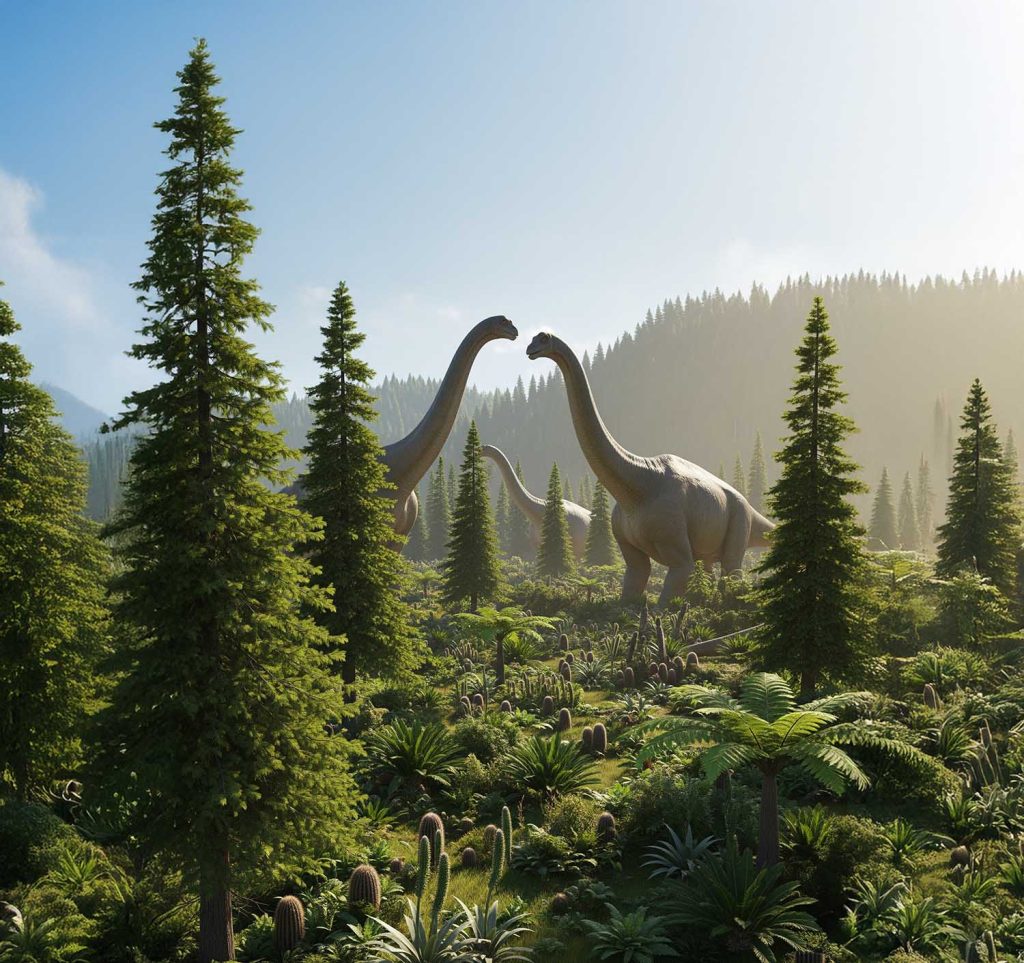
The Kingdom of the Giants
All those giant plants became food for the biggest land animals the Earth has ever known. The true kings of the real Jurassic world were the sauropods. These were the huge, long-necked dinosaurs that everyone thinks of when they imagine this time.
Herds of these giants roamed the land. One of the most famous was Brachiosaurus, which had a long neck that it held up high like a giraffe. Another was Diplodocus, which was incredibly long, with a whip-like tail.
The sauropods were the largest land animals to have ever lived, and their giant size was the biggest feature of the Jurassic period.
Being so big was a great defense against hunters. It also meant they had giant stomachs to digest all the tough plants they had to eat all day. They were like walking, eating mountains.
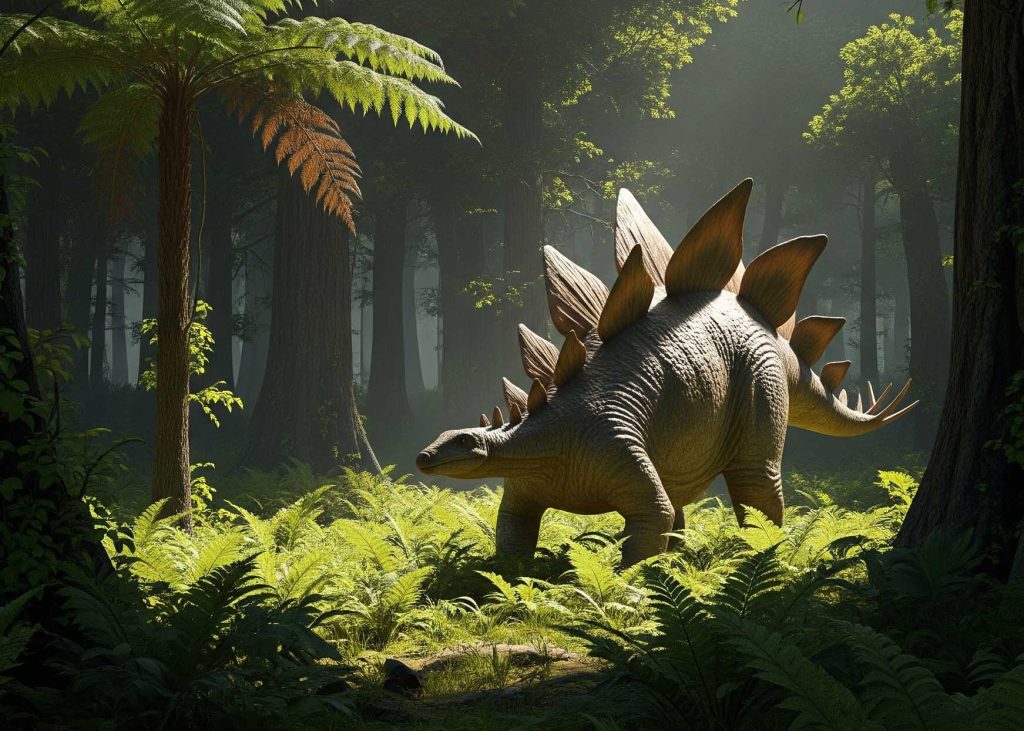
But they weren’t the only plant-eaters. There were also armored dinosaurs like Stegosaurus. This amazing dinosaur is famous for the big, bony plates on its back and the sharp spikes on its tail.
Scientists call these tail spikes a “thagomizer.” Stegosaurus likely used its spiked tail to defend itself from the big hunters of the time. They were like walking fortresses.
The Fearsome Jurassic Hunters
The famous T-Rex had not evolved yet. The top hunter in the real Jurassic world was a different, but still very scary, dinosaur called Allosaurus. It was a big meat-eater with a huge head, sharp claws, and a mouth full of teeth like steak knives.
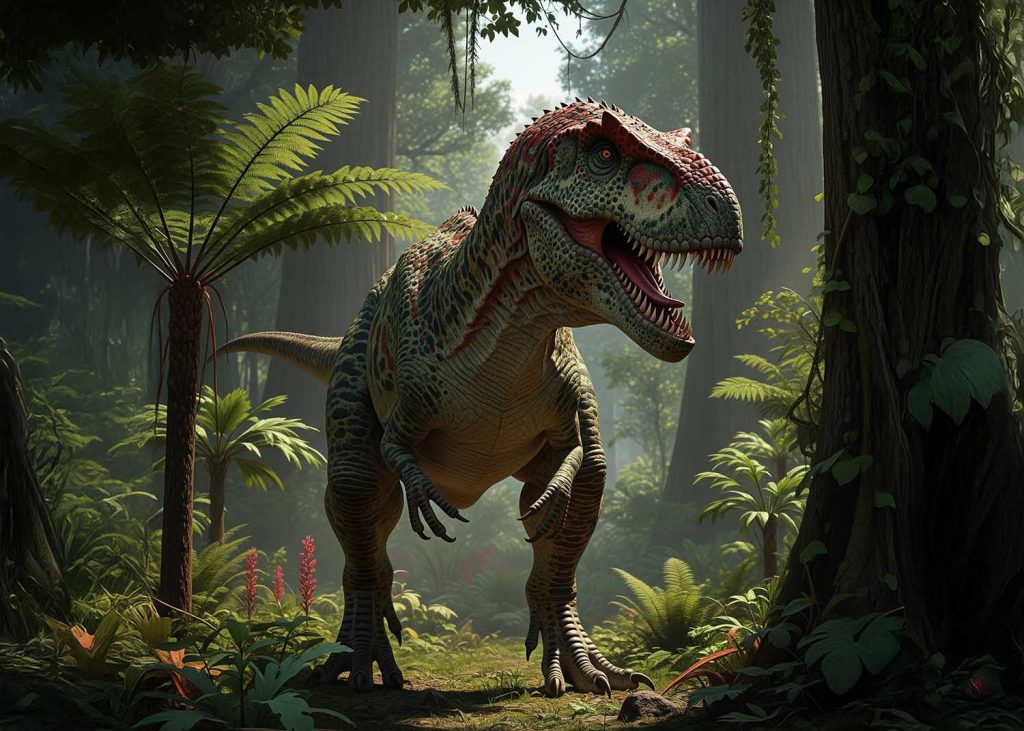
Allosaurus was smaller than a T-Rex, but it was still a powerful hunter. It likely hunted Stegosaurus and maybe even young sauropods. It was the lion of its time.
There were other hunters, too. Some were smaller and may have hunted in packs to take down bigger prey. There was also the strange Ceratosaurus, a hunter with a sharp horn on its nose.
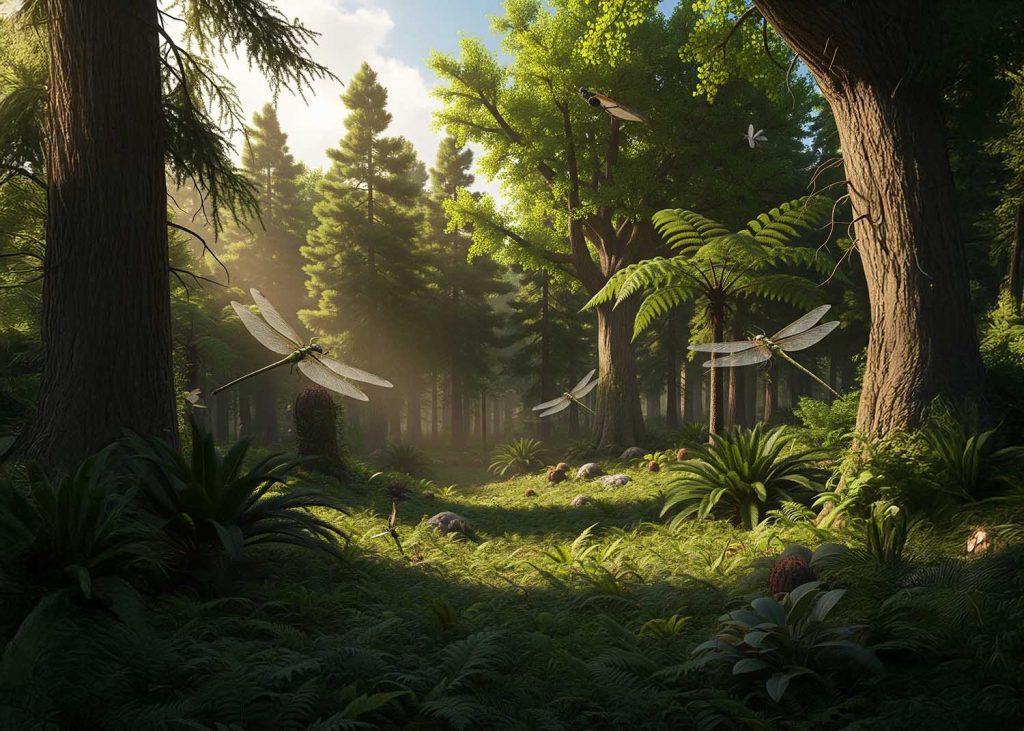
A World Without Flowers
The Jurassic world was very green, but it was a different kind of green than we see today. There were no flowers of any kind. That means there was no fruit, either.
There was also no grass. Instead of grassy fields, the ground was covered in ferns and other low-growing plants. The world was filled with huge forests of pine trees (conifers), ginkgo trees, and giant tree ferns.
Cycads, which look a bit like short, fat palm trees, were everywhere. It was a world of spores and seeds, not petals and pollen. This is a very important part of what made the real Jurassic world so different.
The extra oxygen in the air also allowed insects to grow to scary sizes. Imagine dragonflies with the wingspan of a seagull! The Jurassic wasn’t just an age of giant dinosaurs; it was an age of giant everything.
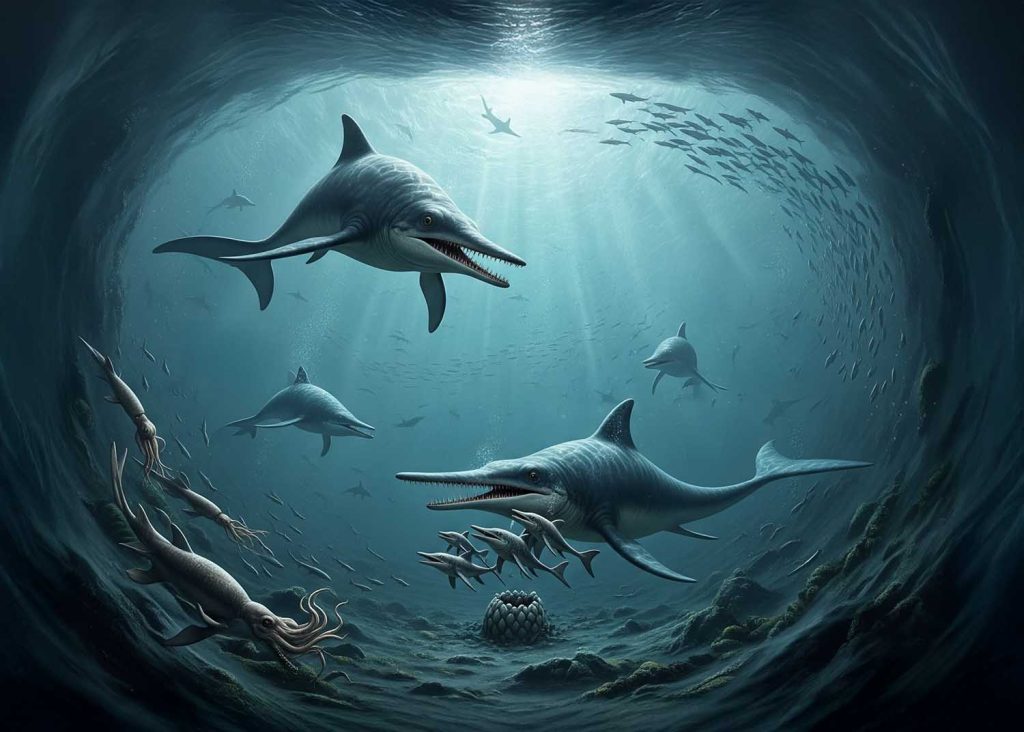
Scary Life in the Jurassic Seas
The oceans of the Jurassic were just as strange and dangerous as the land. They were ruled by giant swimming reptiles, which were not dinosaurs. These were a separate group of animals that had moved back into the water.
The dolphin-like Ichthyosaurs were built for speed. They were expert hunters that chased down fish and squid. They were so well-adapted to the water that they even gave birth to live young in the ocean.
Then there were the Plesiosaurs, with their long, snake-like necks and small heads. They were probably ambush hunters, using their long necks to sneak up on fish from below. They looked like a strange mix of a snake and a turtle.
The top hunter of the seas was a monster called Liopleurodon. This was a type of pliosaur, a short-necked marine reptile with a giant head and huge jaws. Its skull alone was the size of a small car, and it was filled with massive, sharp teeth.
The real Jurassic world was a truly amazing and alien place. It was a time of giants, a dynamic and dangerous period that shaped the story of life for millions of years. It was a world truly ruled by giants.
The Real Jurassic World Quiz
How well do you know the age of the giants?

